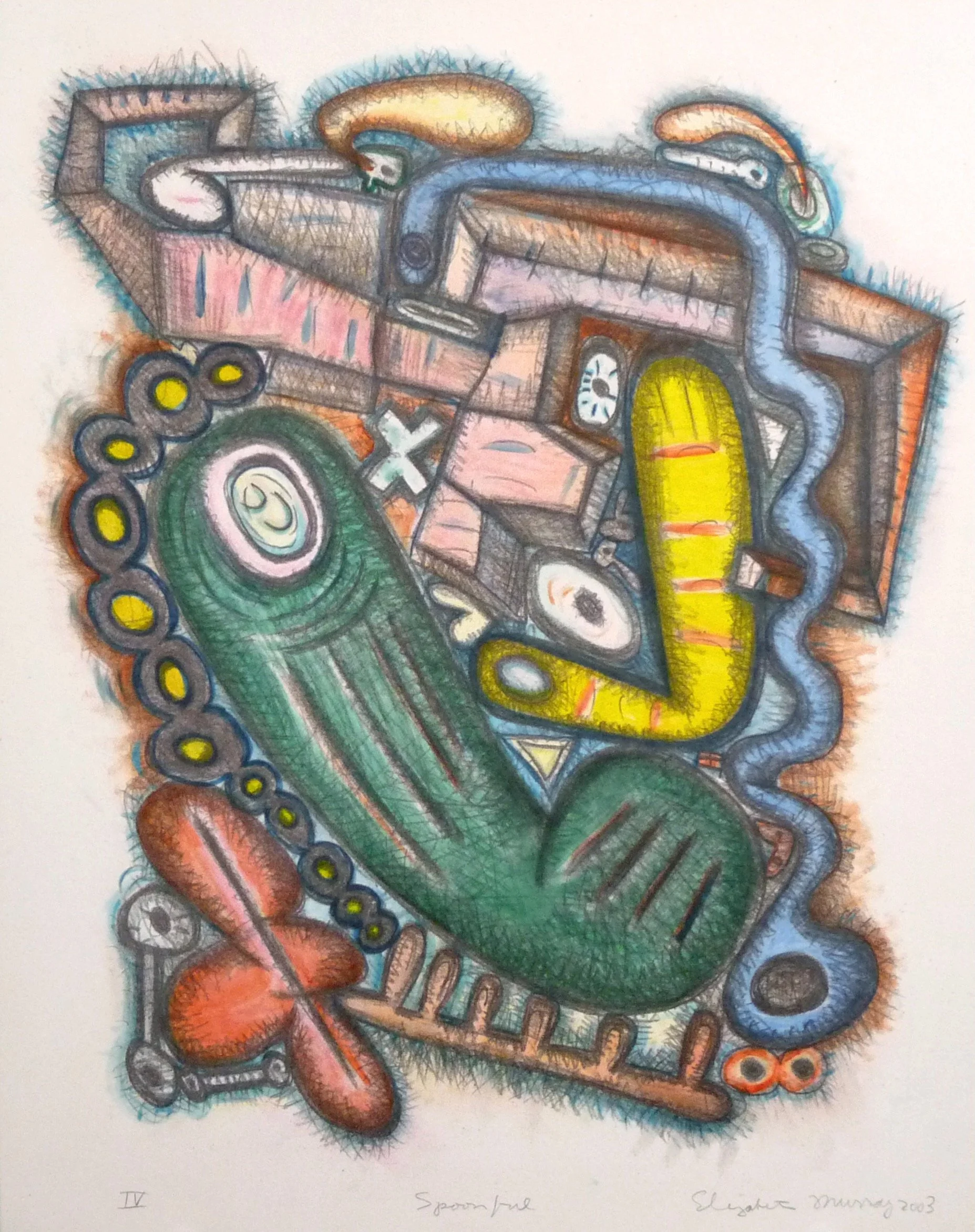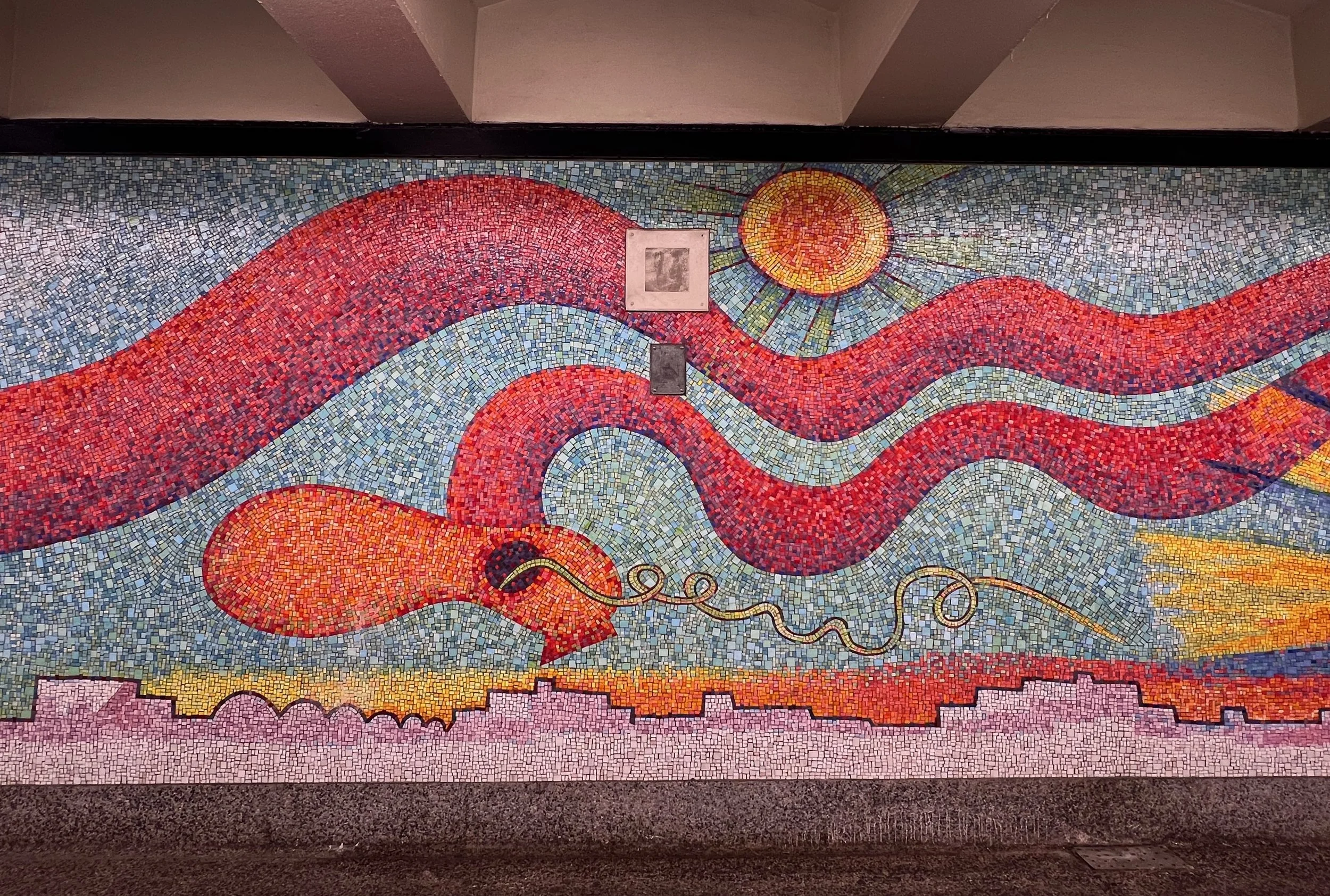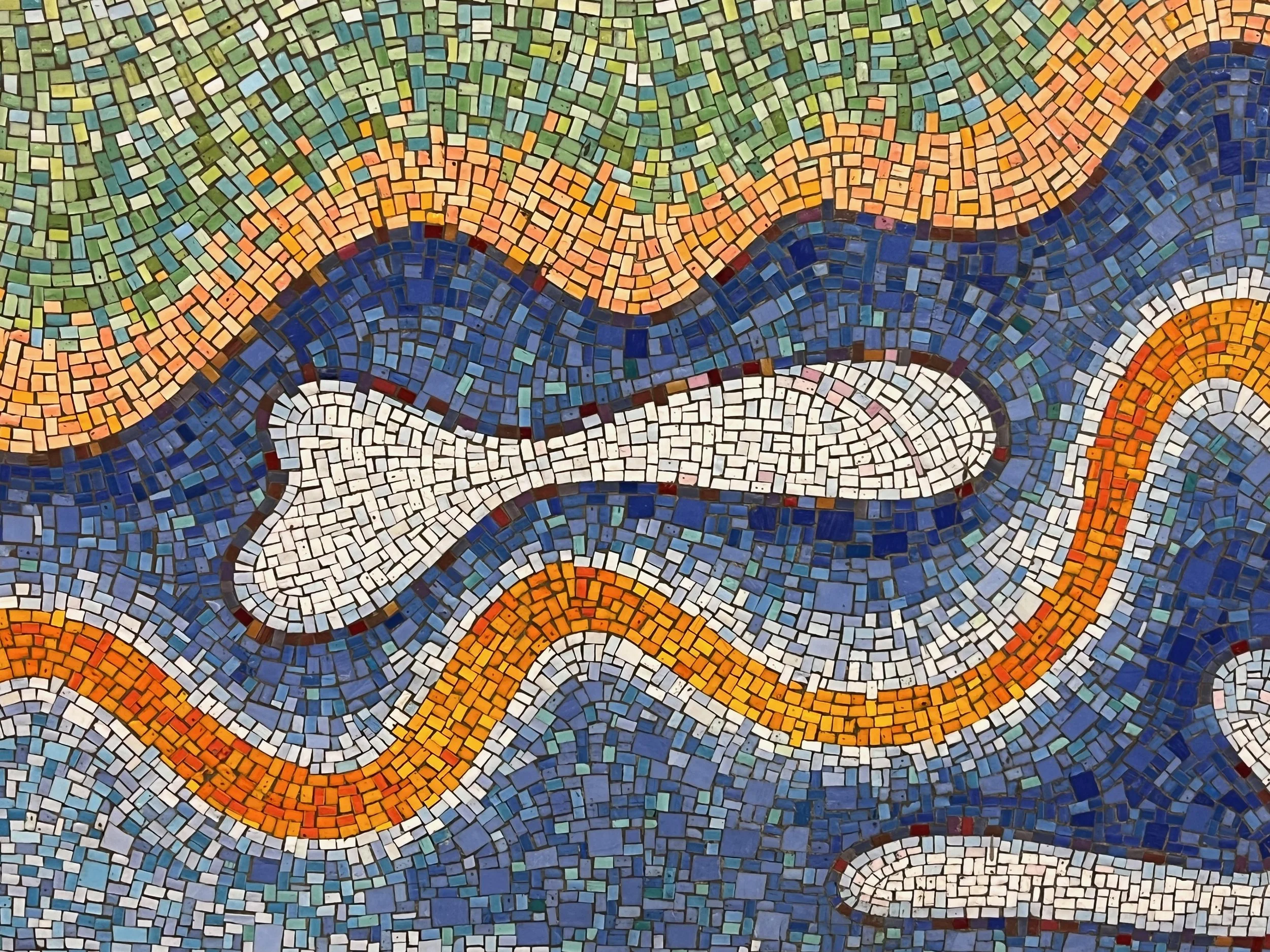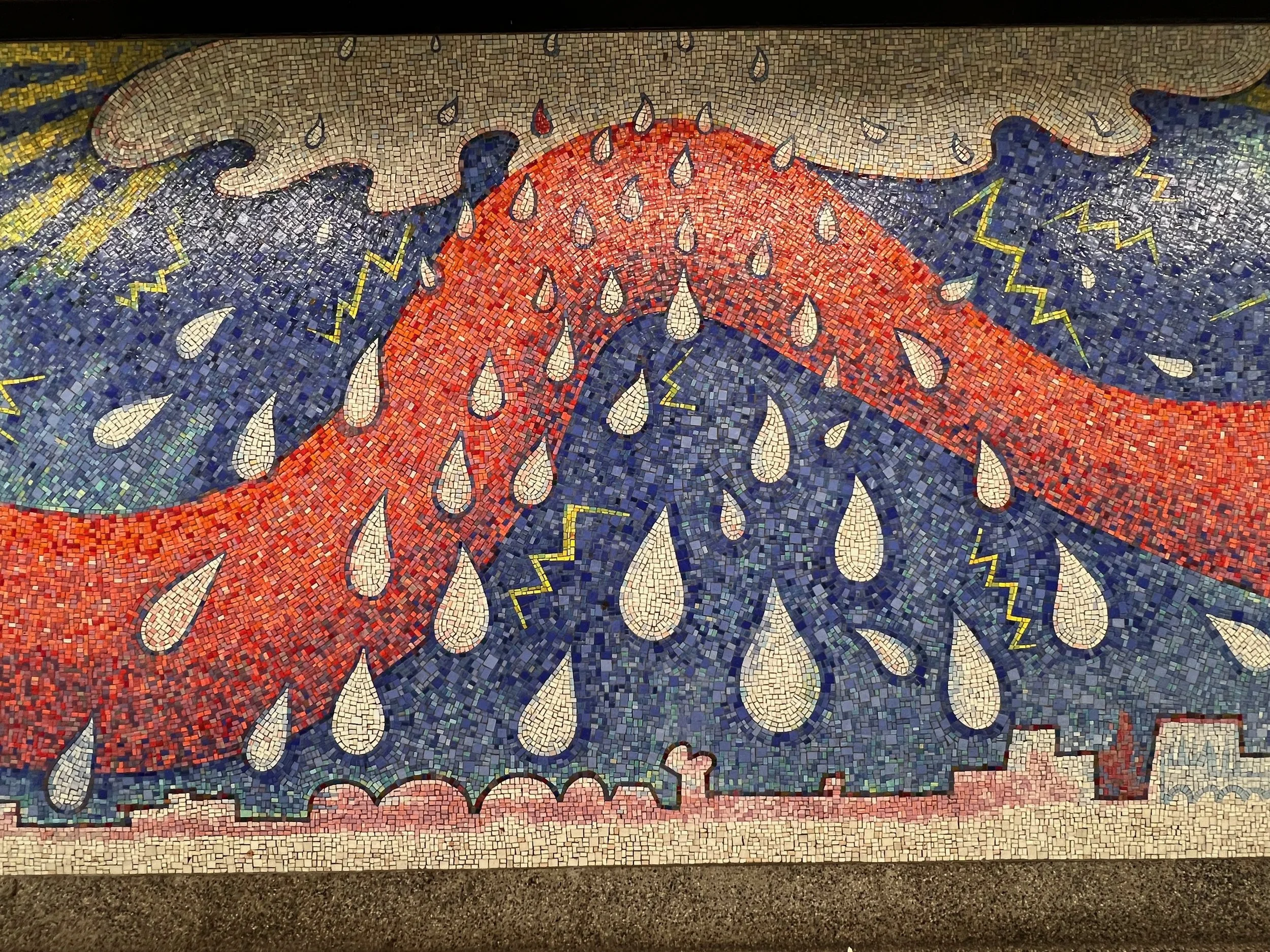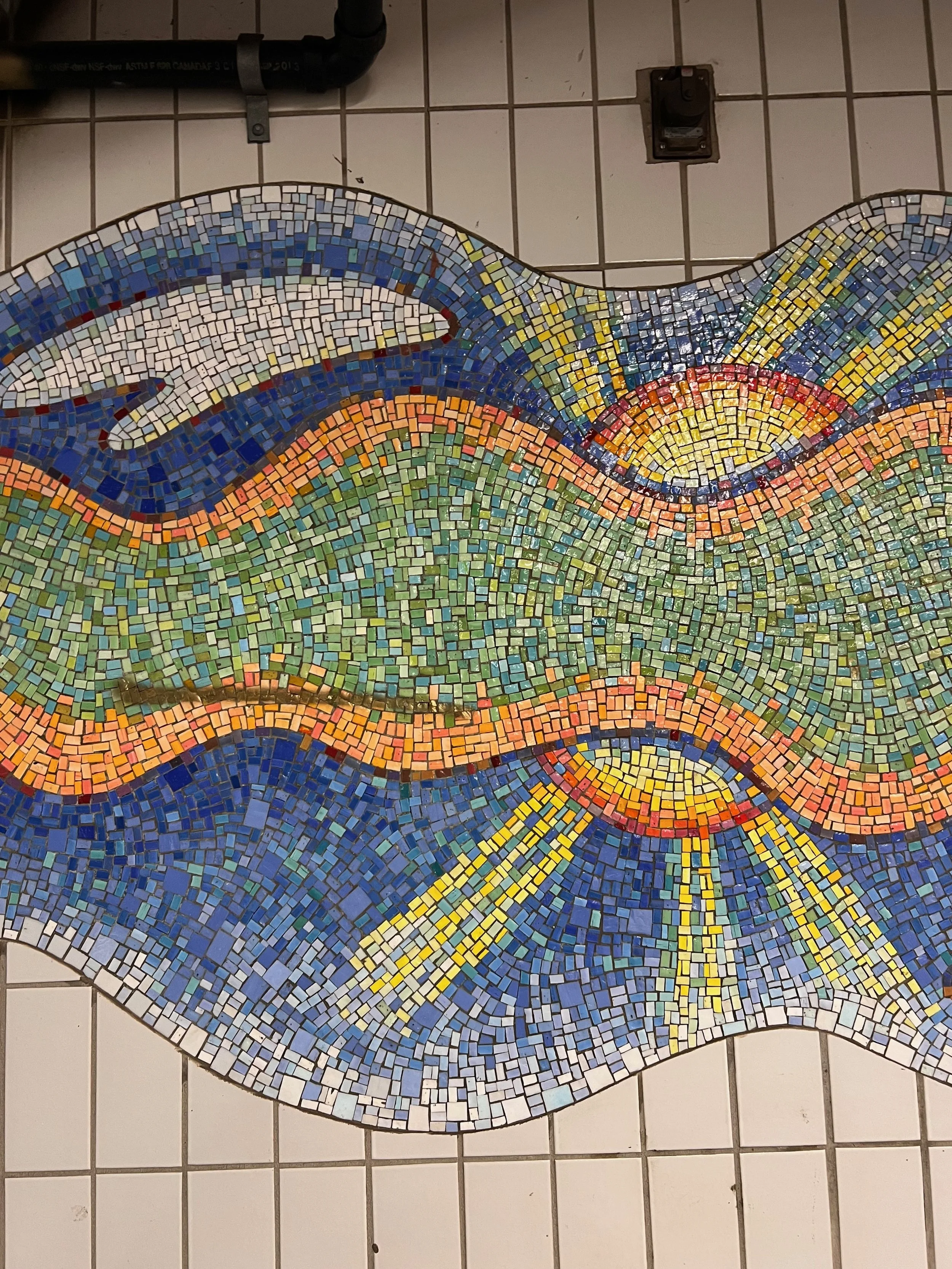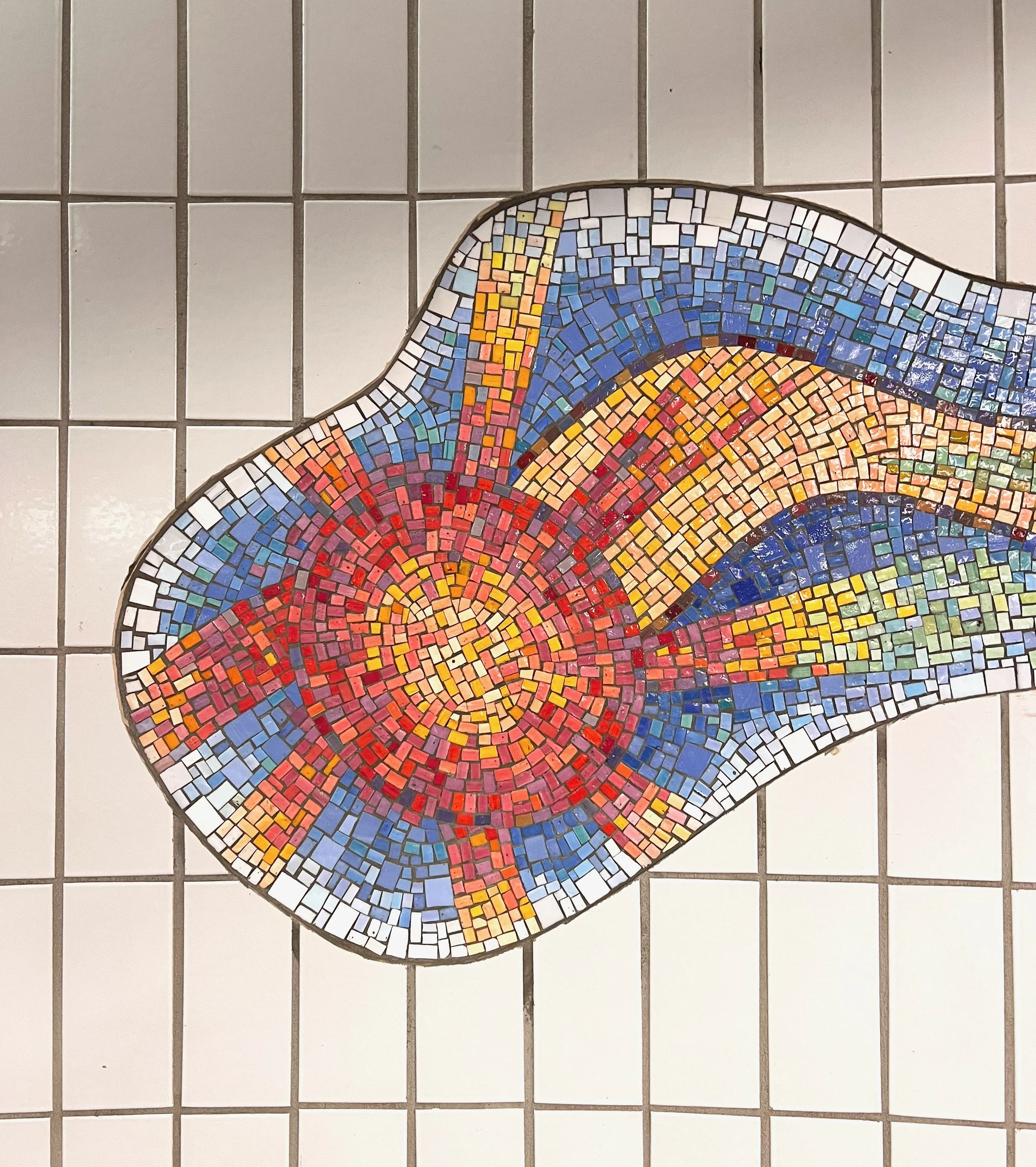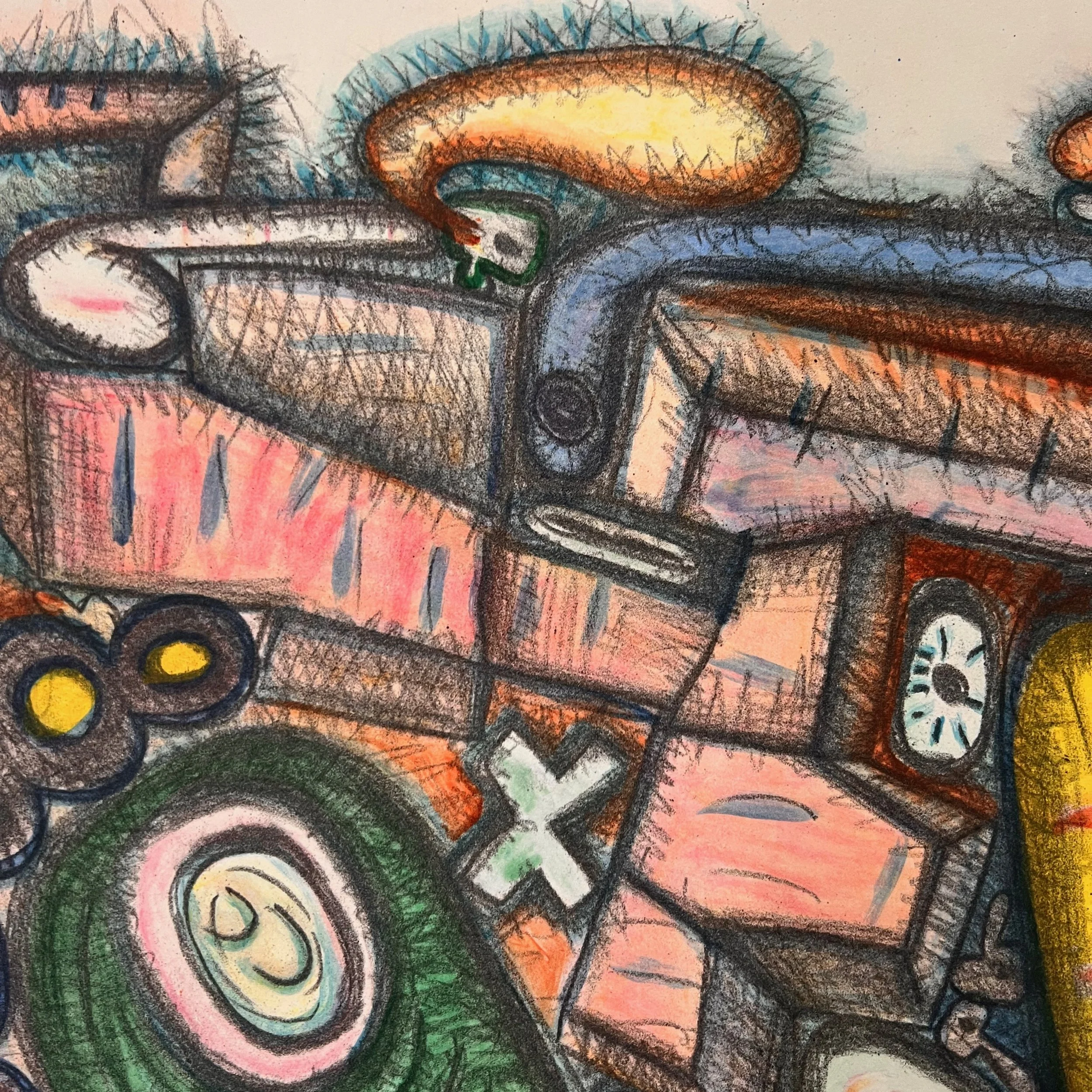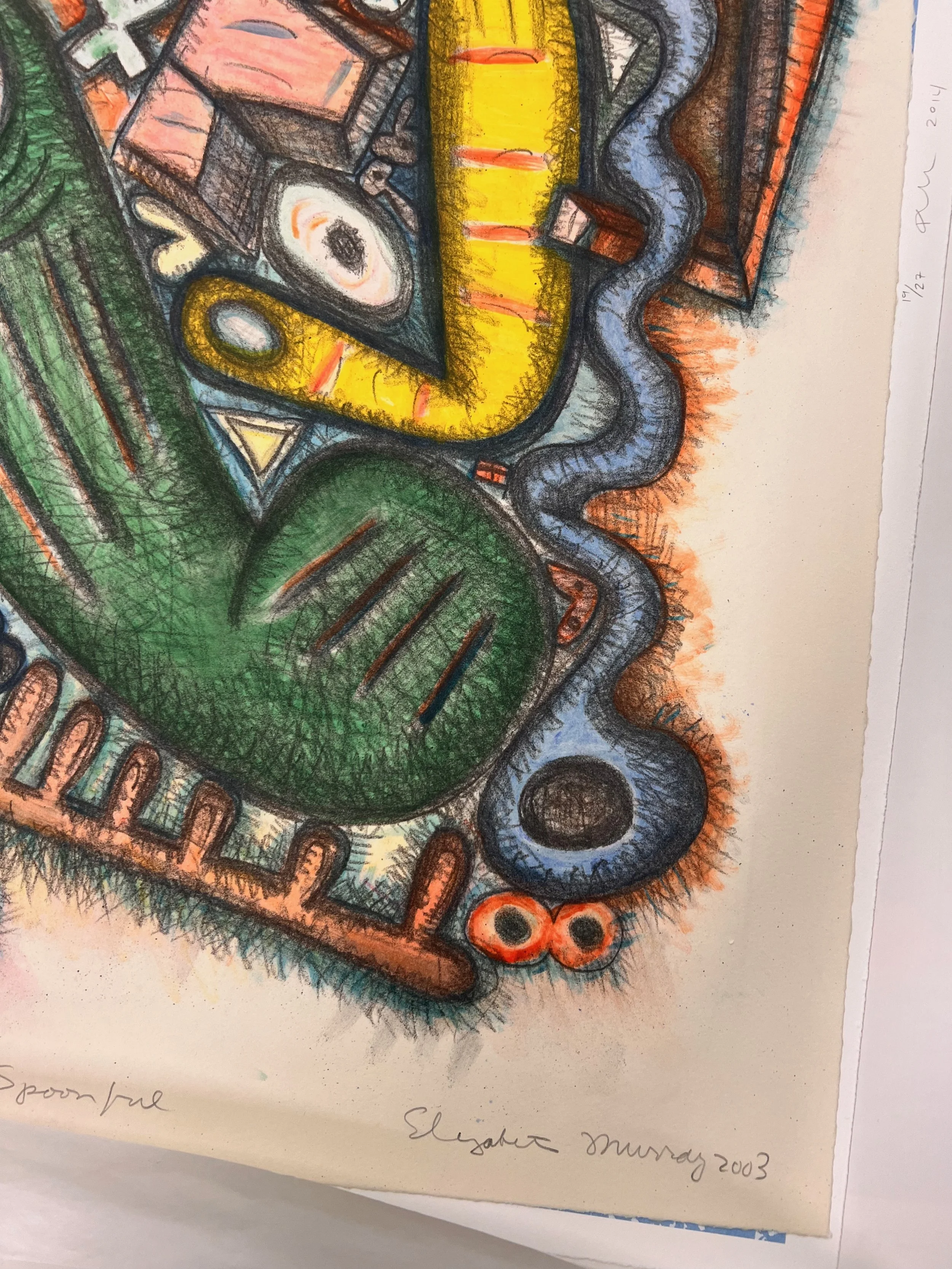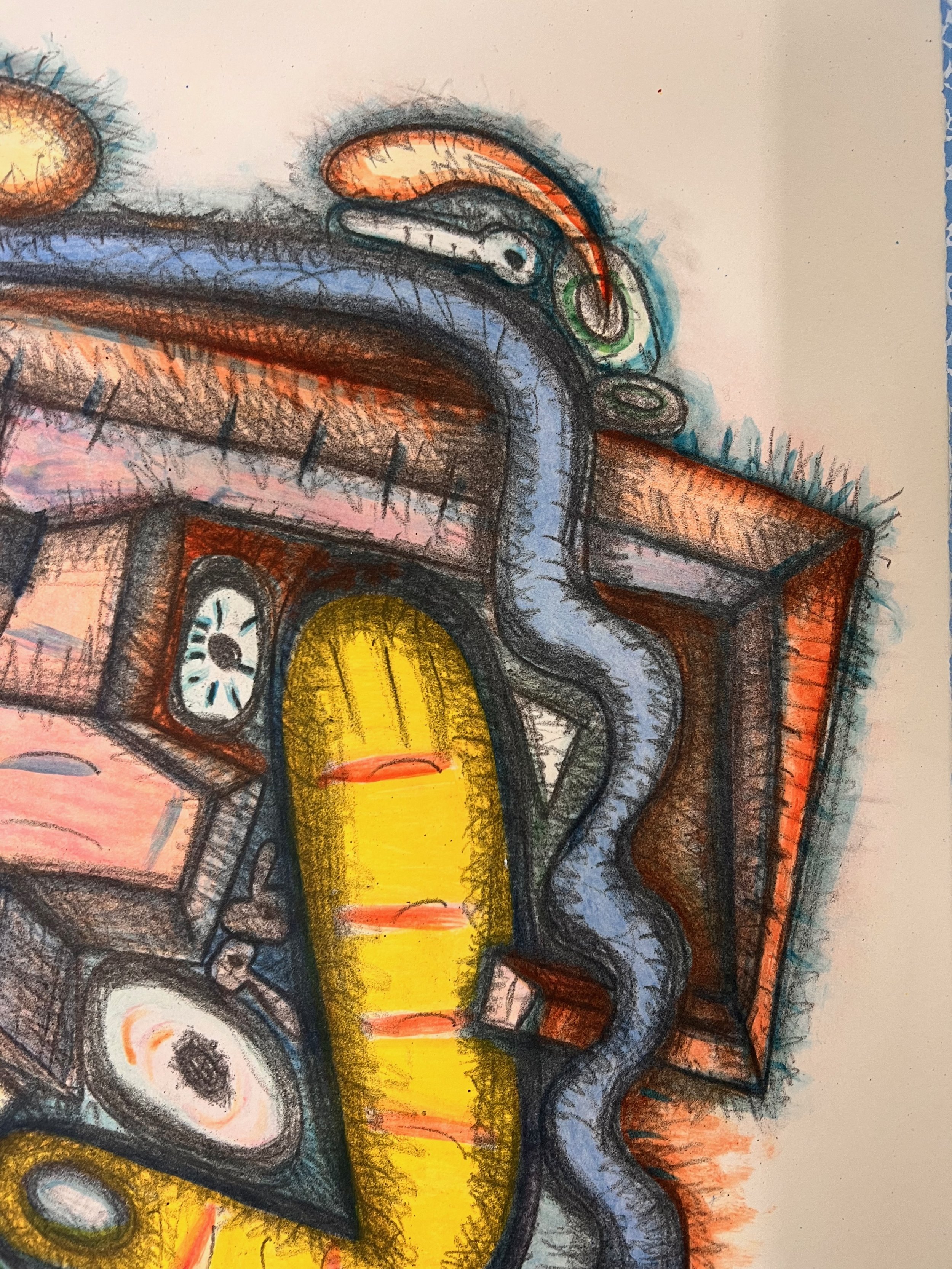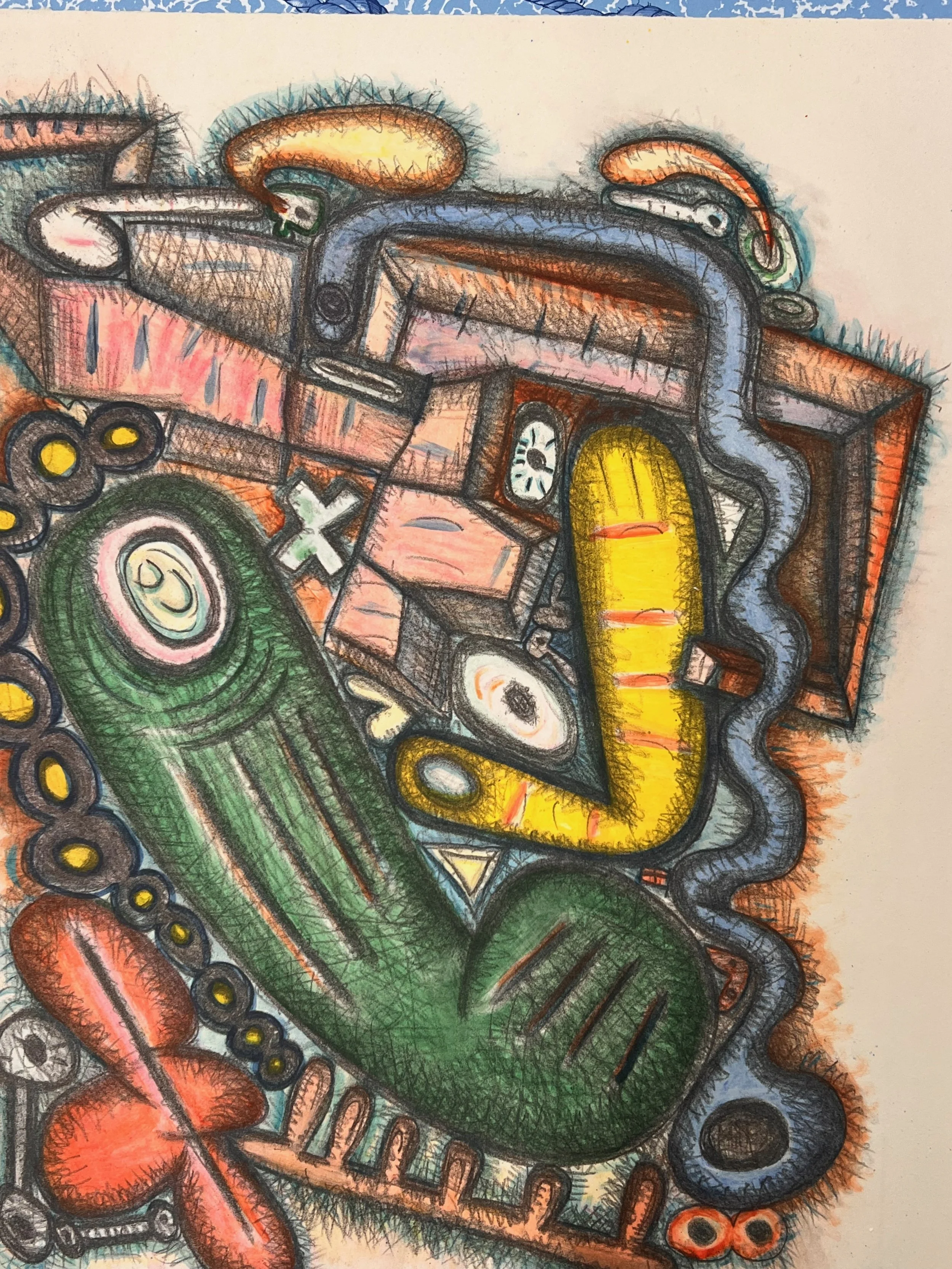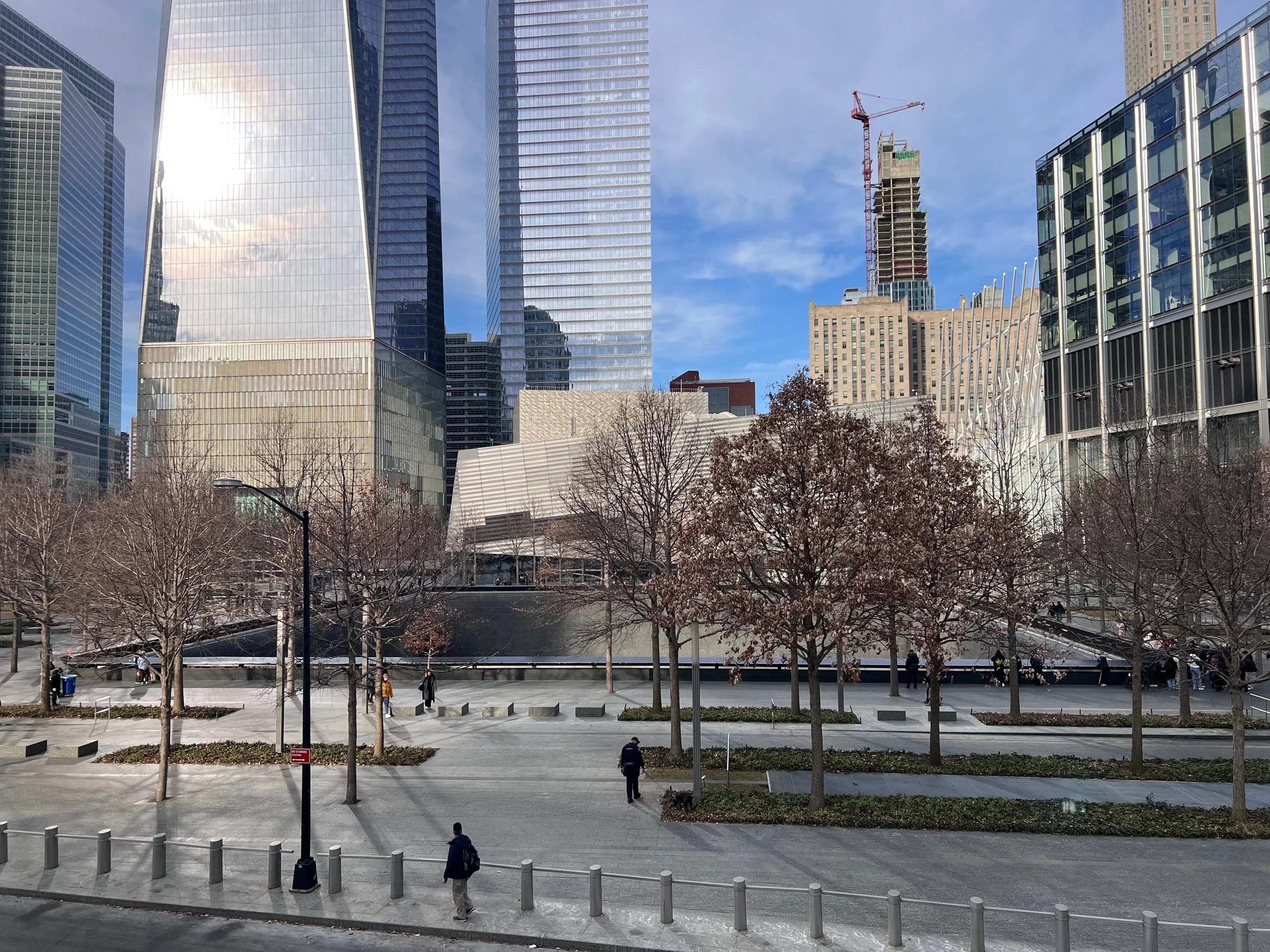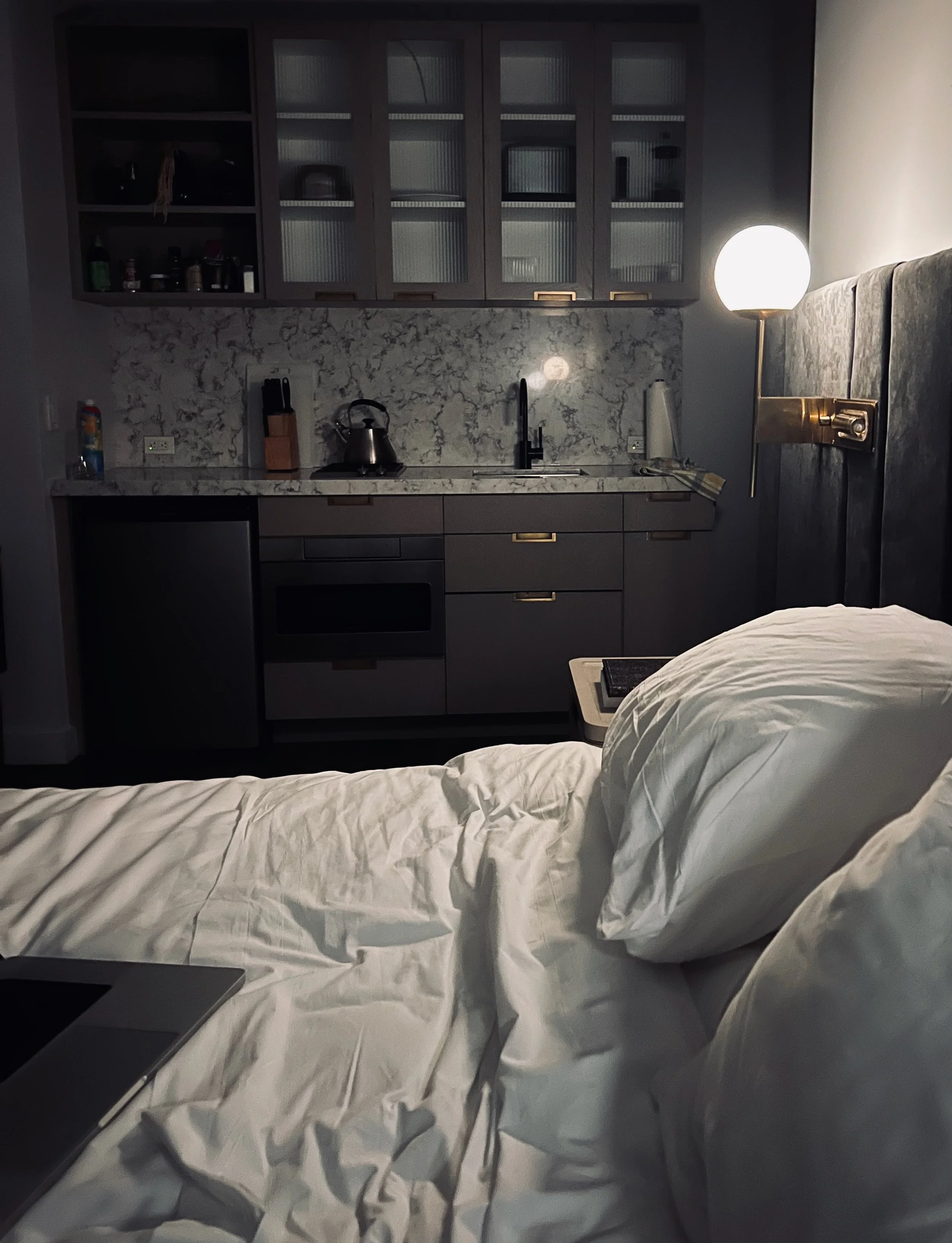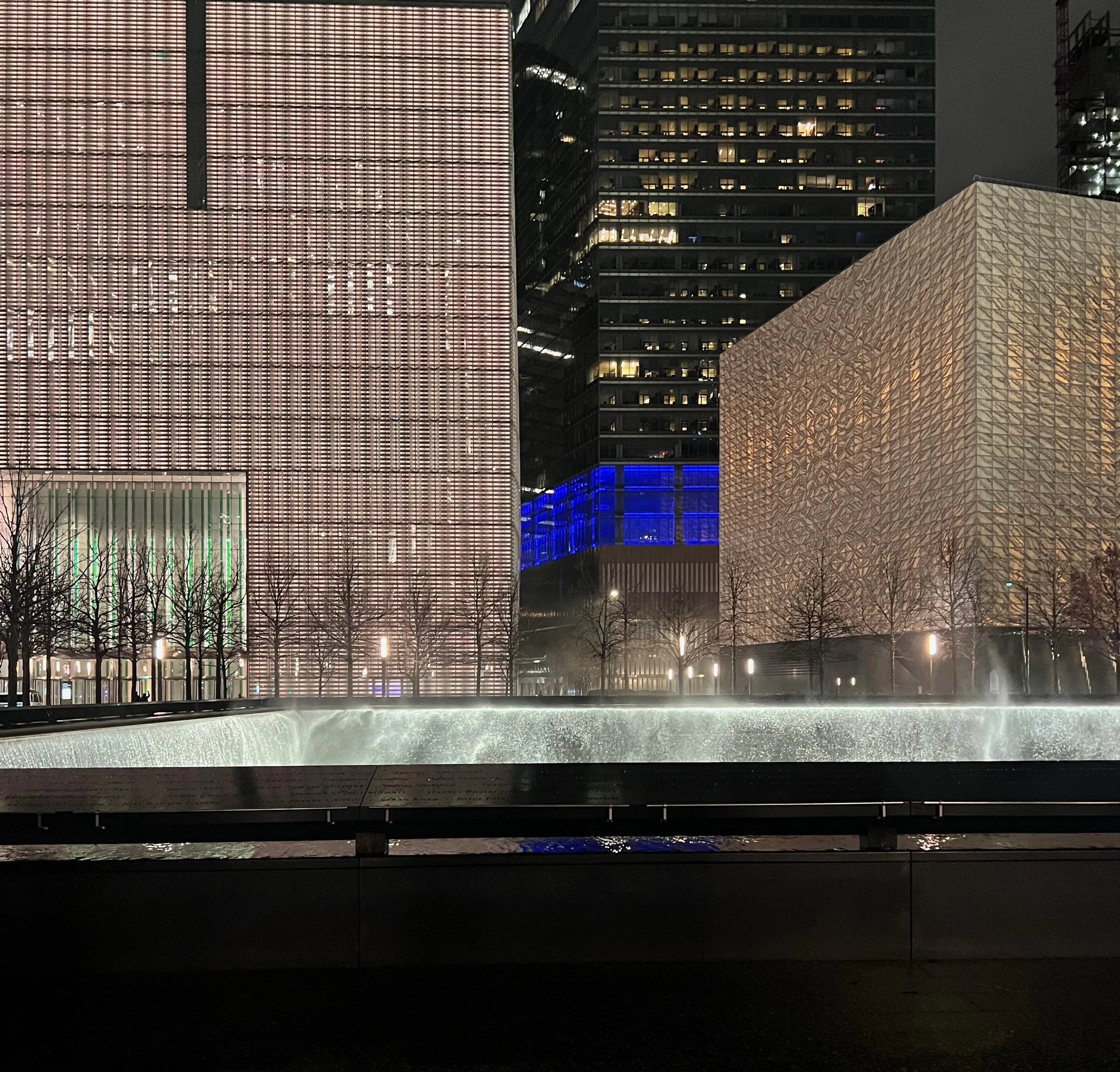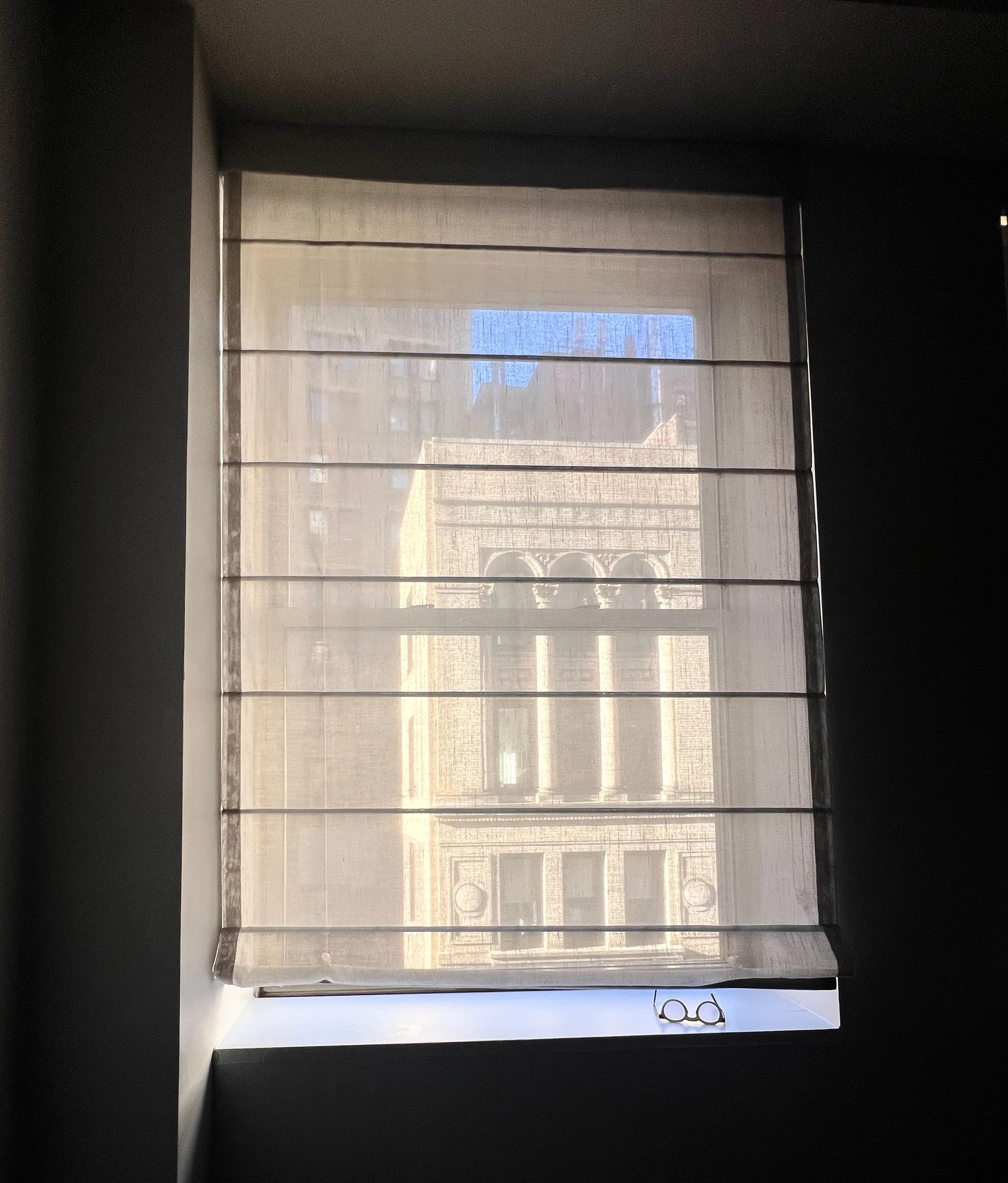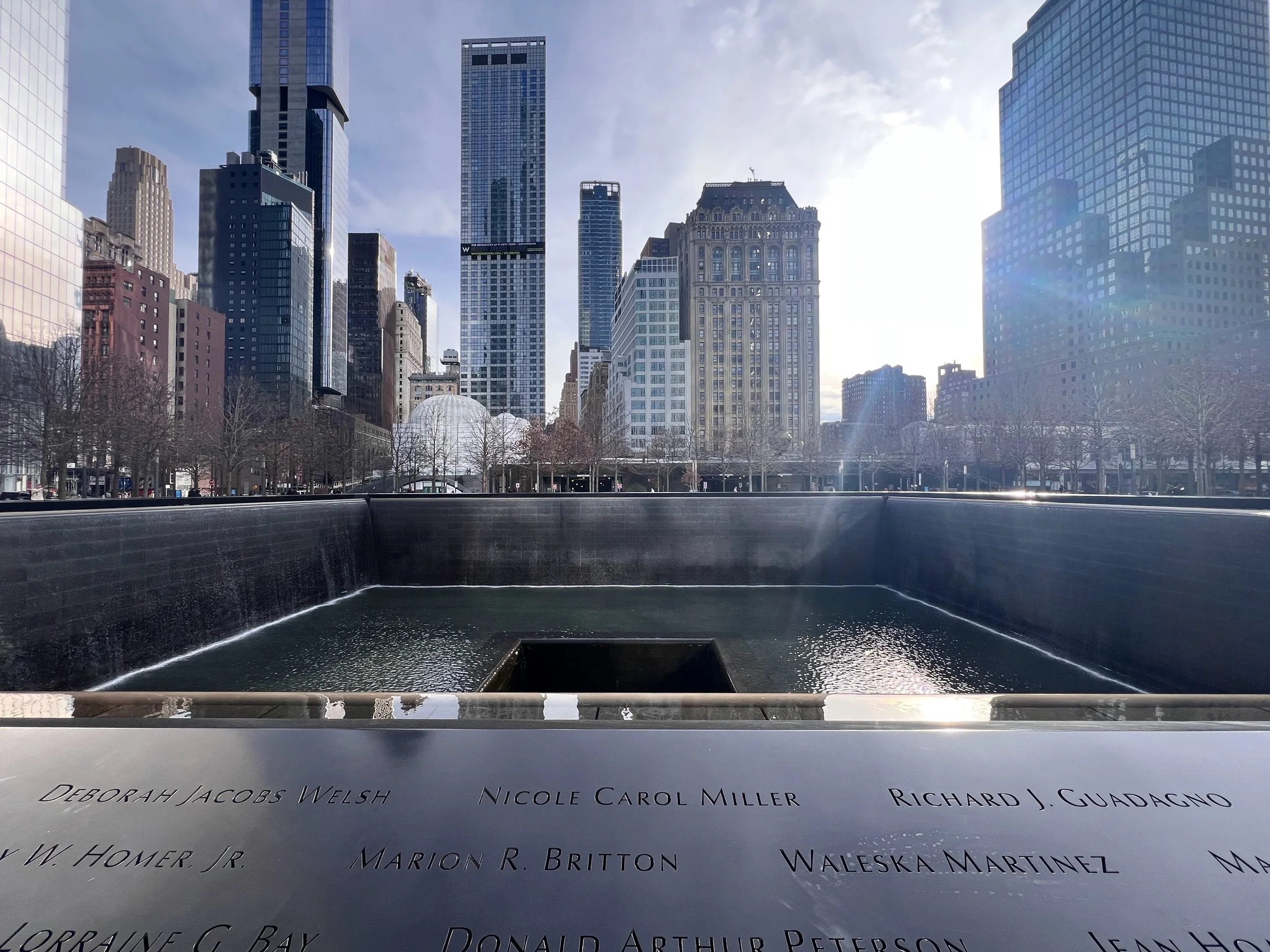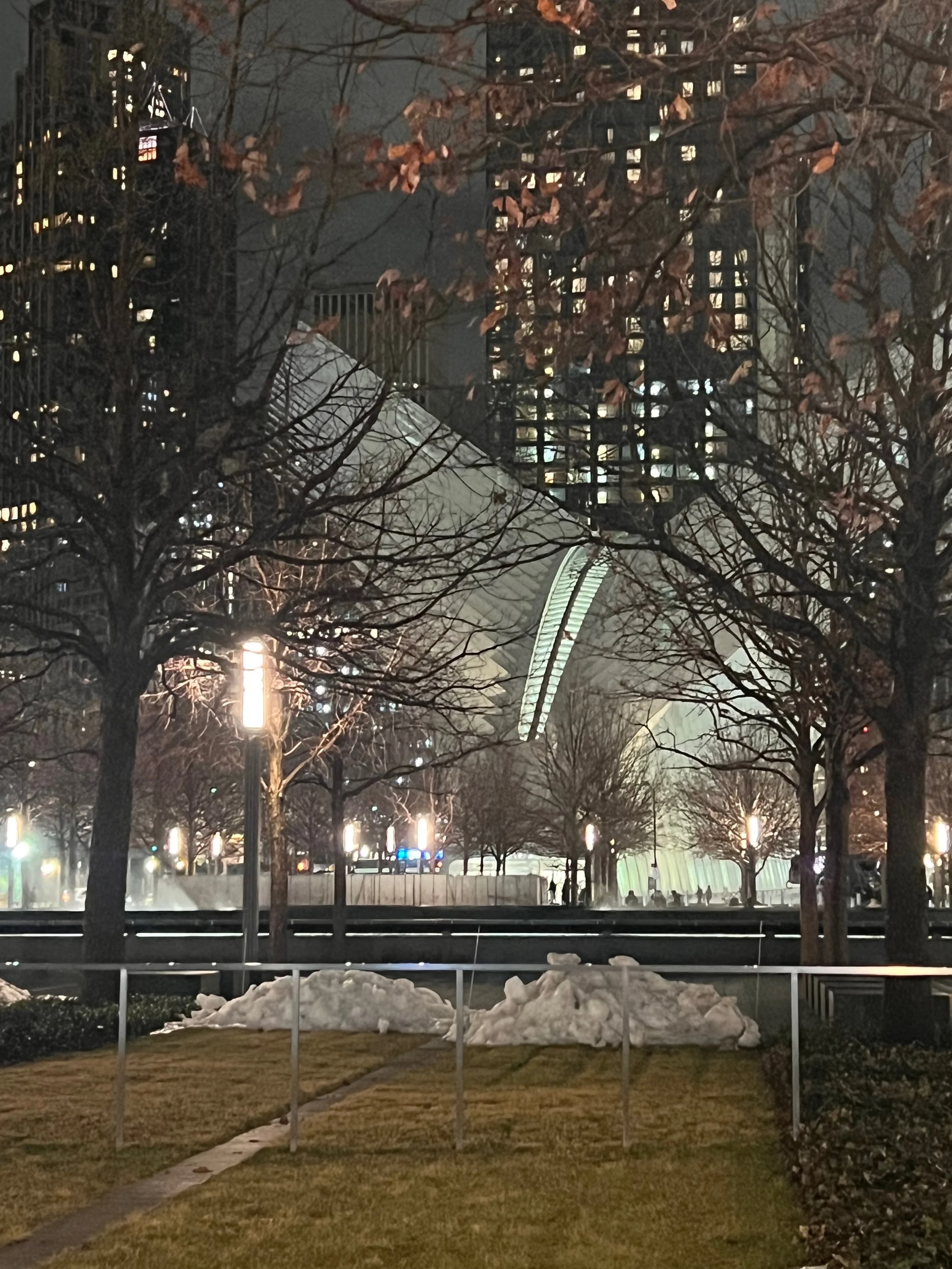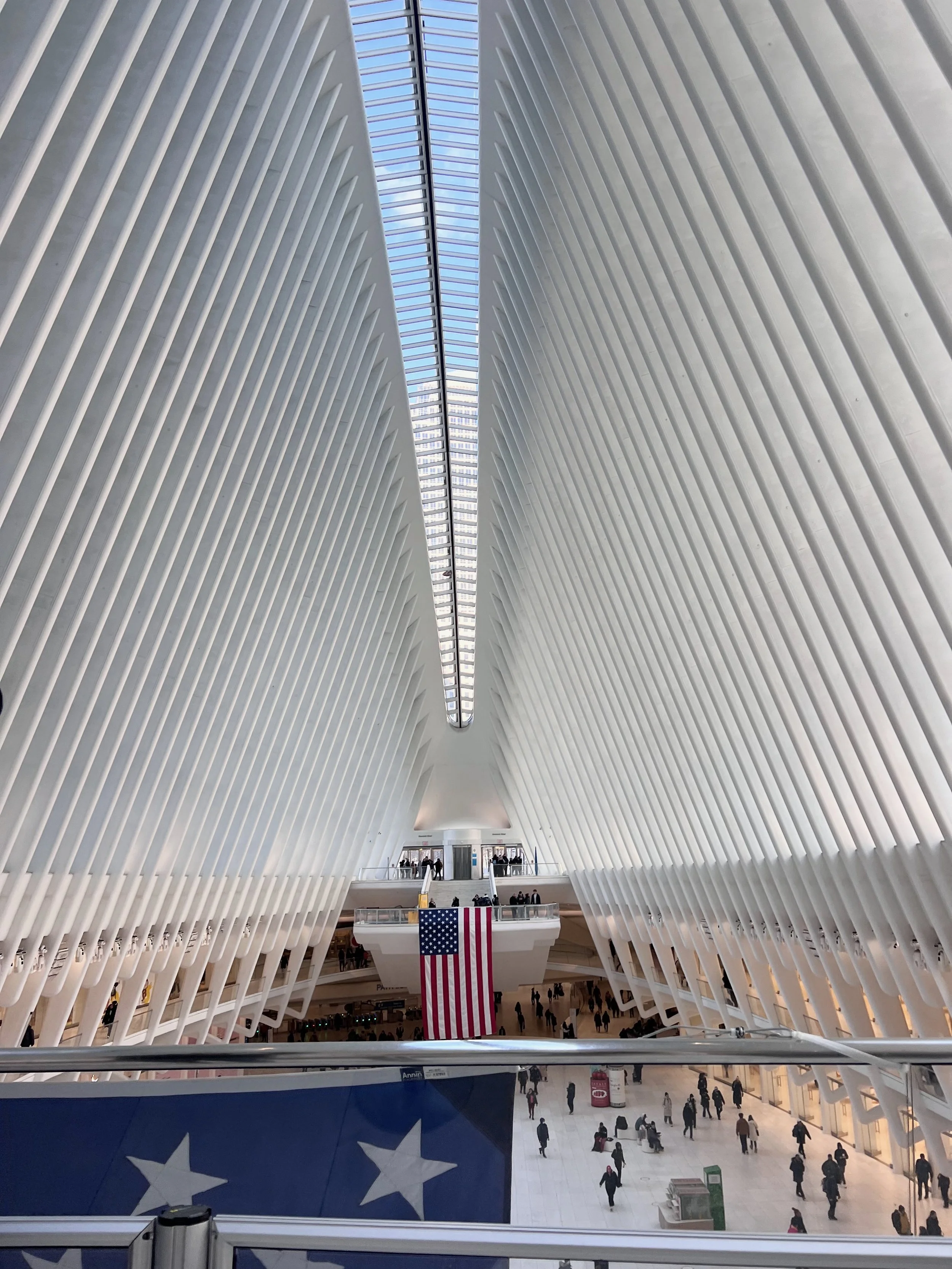Good Morning, Elizabeth Murray
Elizabeth Murray, Spoonful IV, 2003, monotype, 23.75” x 19”
I used to be an artist living in Brooklyn. I was one of many.
For a while, my studio was in a renovated building overlooking a garbage processing center. The building was zoned for commercial use but the layout of the spaces made it seem like they would eventually become apartments. Little alcoves for kitchens with no appliances. Tiny rooms for bathrooms without toilets. Maybe the owners thought the city would mandate a move for the garbage dump. They’d get those residential permits.
One day, I was riding my bike to Manhattan when a car door opened and hit me forcefully in the chest. I was not wearing a helmet. Soon thereafter, I chained the bike to a pole in my neighborhood. Neglected it, abandoned it, and eventually forgot it. I had a strong reaction which became part of a larger reckoning with my own naiveté.
In the years that followed, I took the G train to work which was a safe, inevitably slow route. If something within me went stagnant on the way to work, it got moving again when I’d exit the station at Court Square. In that large passageway, I’d see “Stream” by Elizabeth Murray.
Spread cross three walls, this glass mosaic was commissioned by the Metropolitan Transportation Authority in 2001. It was produced in collaboration with Miotto Mosaics, Inc.
At this time, I worked at Derriere L’Etoile Studios which is a notable fine art lithography studio in Long Island City, New York. With over three decades making prints for artists, printer Maurice Sanchez is an example of coveted longevity in the New York art world. Galleries pop up and pop out, artists emerge and disappear, it is a sign of rare dedication and expertise that allows a business to survive the upps and downs of the art market. In the 1980s and 1990s he made a name for himself by adopting an offset commercial printing press to make editions for artists. Achieving highly saturated color on paper, his printing was exemplary. Not only that, but a relatable, dedicated collaborative approach has given him a reputation as a sturdy and authentic support for creative voices.
Maurice had told me a little bit about Elizabeth Murray and I had seen the prints in the archive.
Elizabeth Murray was born in Chicago in 1940. She attended the Art Institute of Chicago and Mills College for a MFA. Her mother was an aspiring illustrator.
The 1960s work show Elizabeth Murray at an artistic intersection. Her illustrative graphic technique fused with her reverance for pushing paint around. Pursuing a diverse direction of styles that seemed related to abstract expressionism, minimalism and color field approach, she eventually became well-known for rejecting rectangle canvases. Her work became shaped, sculptural wall pieces.
I suspect the visual roots of her chosen forms show an affinity for comics. The shapes could almost be be a morphed abstraction of Popeye the Sailor Man or else, a zeroing in on pictorial explosion in comics, akin to detail in a Roy Lichenstein.
Though she was not part of the “Harry Who?” group out of Chicago, Elizabeth Murray was working contemporaneously. While these might be unconscious inspiration, Murray pulls and puzzles forms together expressively. Somewhat basic forms are combined confidently. Ireverrance and refusal of convention could be interpreted in her appropriation. Shameless, personal pizazz without pretense or second guessing. In fact her individuality and steadfastness has earned her an important place in feminist narratives of the period.
So, about ten years after those G train commutes, I decided to return to my stomping grounds and buy an Elizabeth Murray monotype. Murray’s forms seem to arise from the hand of a creator that was a nurturing force. The forms squiggle and stack into a novel little machine or worldview; expressed unconsciously, trusted implicitly. She seems to dare me to accept that it need not be more than this and is definitely not less.
Since, I often find myself scratching away at a piece of paper with while on the phone, or pin pricking an envelope with a pen while trying to get things done. Elizabeth Murray’s work reminds me that in that ceaseless unconscious energy there is boldness and joy. There is no need to self destruct, mask it or hold back. The finitude of life will do that for us.
For this edition of TWO NIGHTS, I stayed at The 17John Hotel in the Financial District of Manhattan. Since the pandemic, mass amounts of office spaces have been converted to residential units. Adjacent the extraordinary 9/11 monument, a number of grocery stores and outdoor seating areas, make the place feel downright practical; maybe even a little suburban. A multitude of weather patterns over this mid-February visit, offered some unique sights.
